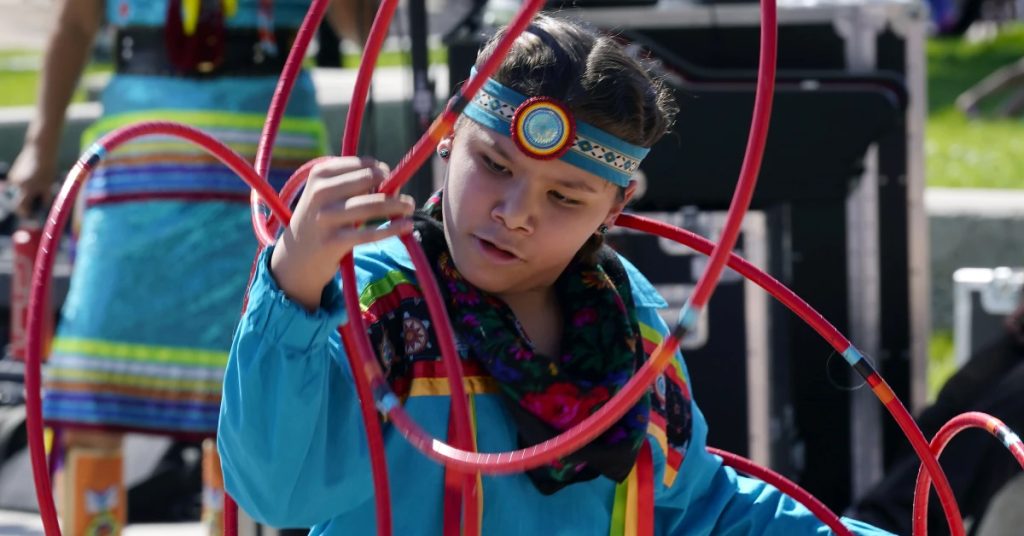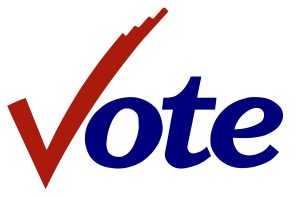By MARK THIESSEN and MORGAN LEE
ANCHORAGE, Alaska
Native Americans celebrated their history on Monday with events across the country marking Indigenous Peoples Day, from a sunrise gathering in Minneapolis to a rally at the Maine Statehouse and traditional dancing, music and food in Arizona and Alaska.
The ceremonies, costumed performers and speeches came two years after President Joe Biden officially commemorated Indigenous Peoples Day. At the time, he said the day is meant to “honor America’s first inhabitants and the Tribal Nations that continue to thrive today.”
At a gathering in Phoenix where dancers performed in traditional Aztec costumes, Sifa Matafahi said it was an opportunity to “pay respect to indigenous cultures … to reflect on our past and history while also acknowledging our cultural presence.”
In Minnesota, about 150 people, including the governor and lieutenant governor, attended a sunrise prayer and ceremony at Bde Maka Ska, a lake surrounded by parkland on the south side of Minneapolis.
“Today, we recognize our ancestors and predecessors who really laid the foundation for us to stand,” said Thorne LaPointe, a Native American organizer. “And we will always recognize our elders who are here and those who have gone on before us, who really kicked open the doors in their time, nationally and internationally.”
Seventeen states and Washington, D.C., have holidays honoring Native Americans, according to the Pew Research Center. Many of them celebrate it on the second Monday of October, pivoting from a day long rooted in the celebration of explorer Christopher Columbus to one focused on the people whose lives and culture were forever changed by colonialism. Dozens of cities and school systems also observe Indigenous Peoples Day.
In Augusta, Maine, several hundred people celebrated Indigenous Peoples Day by rallying outside the Statehouse in support a Nov. 7 statewide vote on an amendment that would require the restoration of tribal treaties that were omitted from printed versions of the state constitution.
Maulian Bryant, Penobscot Nation ambassador and president of the Wabanaki Alliance, said once people understand the importance to Native Americans, they will support it like they did when towns, and then the state, enacted Indigenous Peoples’ Day.
Bryant recalled the successful grassroots conversations that took place about the legacy of Columbus, whose arrival brought violence, disease and suffering to Native Americans.
“We want to honor the true stewards of these lands,” she said.
Some who gathered for a ceremony in Anchorage, Alaska, said such a celebration would have been unheard of there six decades ago.
Gina Ondola, a Dena’ina Athabascan from the city, said she graduated from East Anchorage High School in 1962 with only four or five other Alaska Natives in her class and certainly no Indigenous culture club for Native students.
“We didn’t learn much about our history,” she said. Instead they were taught how white Europeans who came to North America were slaughtered by Native Americans.
“When I was growing up, I didn’t feel too much pride in being Native. I always heard about ‘drunk Natives,’” said Odola, who was wearing black gloves with red and white beadwork to represent her family’s colors.
“It feels good for me to be able to feel pride in who I am,” she said.
The Anchorage celebration included Alaska Native dance groups, traditional Alaska Native game demonstrations and a student wearing a “Molly of Denali” costume. The PBS show was the nation’s first children’s series to feature Indigenous leads.
Abigael Hollis, a freshman film student at the Institute of American Indian Arts, was among those who attended a powwow at a downtown plaza in Santa Fe, New Mexico, to celebrate Indigenous Peoples Day. It brought together Native American dancing groups from throughout the state and beyond, as well as Native American jewelers, potters and weavers who sold artwork at outdoor stands.
“It’s celebrating the fact that my ancestors lived to have me, and that we’re still around and that we can celebrate each other and love each other,” said Hollis, who is of Cherokee ancestry and wore traditional dress including a coming-of-age necklace made of buffalo bone and glass beads.
New Mexico, which is home to 23 federally recognized tribes, replaced Columbus Day with Indigenous Peoples Day through legislation in 2019.
The Santa Fe festival began with a blessing by dancers from nearby Tesuque Pueblo – an acknowledgement that the city stands on the pueblo’s ancestral lands, said Caren Gala, who heads the Santa Fe Indigenous Center and helped organize the powwow.
We wanted to pay respect and homage to that – that this is their land,” said Gala, who is affiliated with three pueblos, Laguna, Taos and Nambé.
Lee reported from Santa Fe, N.M. Associated Press writers David Sharp in Augusta, Maine, Mark Vancleave in Minneapolis, and Ross Franklin in Phoenix contributed to this report.



